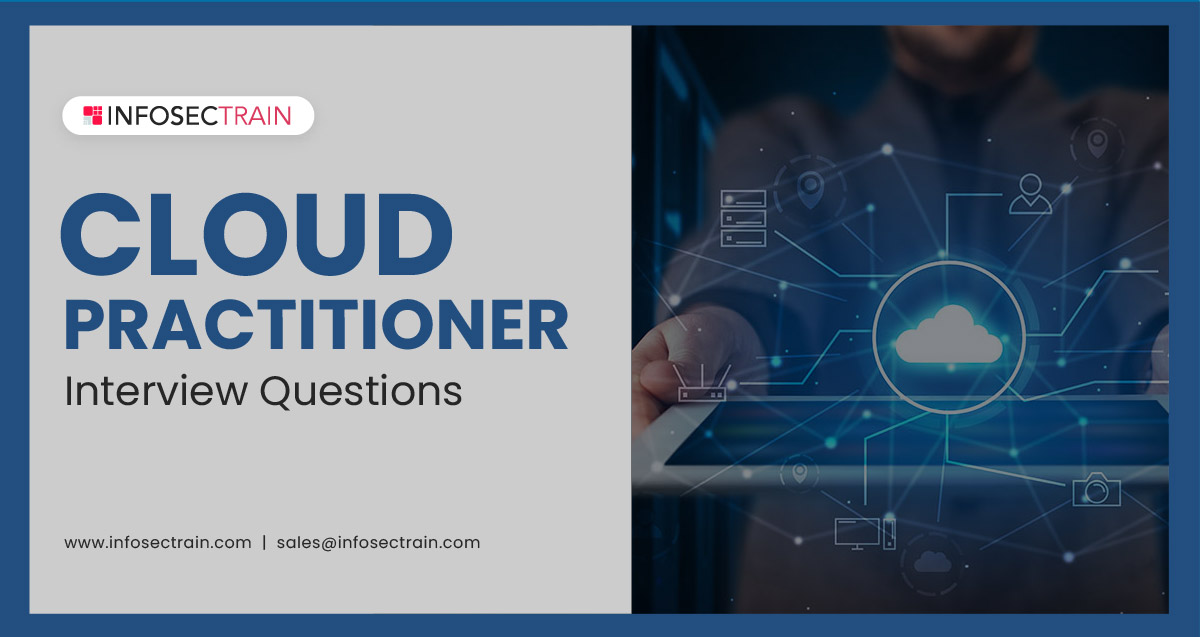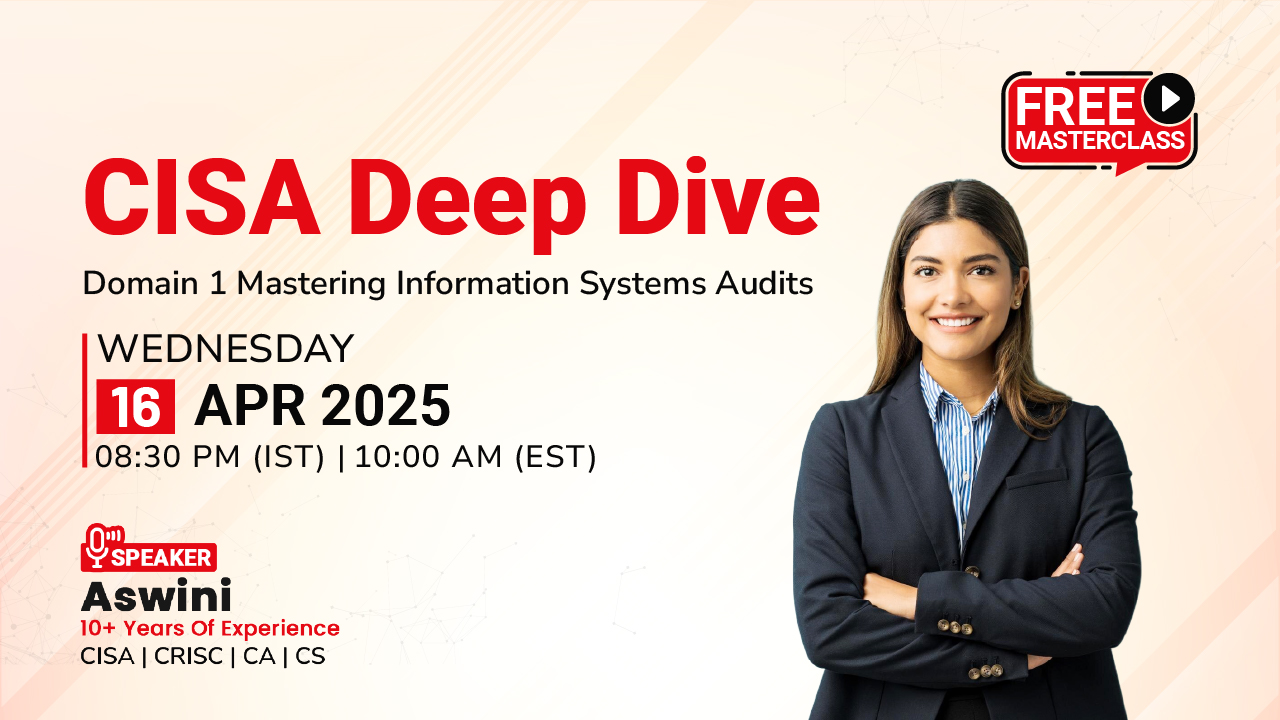Cloud Practitioner Interview Questions
Nowadays, more and more businesses realize the genuine potential of cloud computing for their success. As a result, an increasing number of businesses are migrating their operations to the cloud, and these businesses need experts who can support this transition. Therefore, there is a massive surge in demand for cloud computing jobs worldwide.

The Cloud Practitioner role is an excellent place to begin if you want to get into the realm of cloud computing. They are skilled technical specialists that can assist cloud operations in a variety of verticals and industries. They are familiar with cloud computing and have a solid knowledge of cloud-based platforms.
However, to become a Cloud Practitioner, you need to gain a basic understanding of cloud computing as you will be responsible for overseeing a company’s cloud computing strategy, pass the certification exam and ace your interview. In this article, we have curated multiple Cloud Practitioner interview questions and answers in 2022 to help you prepare to crack your interview and land a lucrative career easily.
Top Cloud Practitioner Interview Questions and Answers:
Question 1: What is cloud computing?
Answer: This is the most fundamental question asked in an interview to check your basic understanding of the domain. In layman’s words, cloud computing is the pay-as-you-go model-based on-demand delivery of IT resources over the Internet. These IT resources might include everything from basic computing services like servers, storage, networking, databases, and software to more complex services like artificial intelligence.
Question 2: What are the most common cloud solutions available today?
Answer: Some of the popular cloud solutions available today are:
- Amazon Web Services (AWS)
- Microsoft Azure
- Google Cloud Platform (GCP)
- IBM Cloud
- Oracle
- Salesforce
- Alibaba Cloud
Question 3: What are the various layers of cloud architecture?
Answer: Various layers of cloud computing architecture are:
- Hardware and Firmware
- Software Kernel
- Cloud Software Infrastructure Layer
- Cloud Software Environment Layer
- Cloud Application Layer
Question 4: What is Amazon Elastic Compute Cloud (EC2)?
Answer: Amazon EC2 is an on-demand computing service offered by Amazon. Instead of consumers having to buy their hardware and connect it to a network in order to deploy their apps, Amazon merely provides them with practically infinite virtual machines to run their applications while they take care of the hardware. You may use it to set up networking and security, run as many or as few virtual servers as you need, and control storage.
Question 5: What is the benefit of elasticity as per AWS?
Answer: Elasticity refers to the capacity to scale up or down IT resources in response to demands. Therefore, in terms of AWS, elasticity is the capacity to acquire resources and release them as needed.
Question 6: What are a few common use cases for cloud computing?
Answer: Some of the common use cases for cloud computing are:
- Infrastructure-as-a-Service (IaaS): With IaaS, the cloud eliminates all the challenges of setting up an IT infrastructure with the necessary specifications and the astronomical cost involved.
- Platform-as-a-Service (PaaS): With PaaS, the cloud enables software developers to build, run, and manage software applications rather than concentrating on the underlying IT infrastructure.
- Software-as-a-Service (SaaS): With SaaS, the cloud allows users to access software applications over the Internet on a subscription basis eliminating the hassle of developing the entire software application.
- Cloud storage: Since cloud-based storage has already replaced local hard drives as the norm in IT systems, it is one of the most prevalent use cases for cloud computing.
- Serverless computing: Developers can create and execute applications using this cloud-native development methodology without needing to manage servers. With this, you may execute your applications without worrying about the back-end servers.
- Disaster recovery: It is easier because the cloud offers flexibility, fewer complications, and, most crucially, less downtime. Additionally, prior data backup techniques had flaws due to physical disc corruption or stock issues.
- Test and development: Without the drawbacks of setting up and managing on-premise IT resources, cloud computing offers ready-to-use, customizable, and fully configured resources for the testing and development of apps and services.
Question 7: What are the most popular large-scale cloud computing platforms currently available?
Answer: Some of the most popular large-scale cloud computing platforms available are:
- Apache Hadoop
- MapReduce
Question 8: What makes up the cloud ecosystem’s primary components?
Answer: The primary components of the cloud ecosystem are:
- Cloud Service Provider
- Cloud Service Broker
- Cloud Service Customer
- Cloud Auditor
- Cloud Carrier
You might also discover the following components from some other certification organizations or references:
- Cloud Service Provider
- Cloud Service Partner
- Cloud Service Broker
- Cloud Auditor
- Cloud Service Customers
- Cloud Service User
Question 9: How is data security in the cloud possible?
Answer: Some of the tips to secure data in the cloud are:
- Encrypt your data
- Use a strong password
- Use MFA wherever possible
- Configure your privacy settings
- Avoid storing your sensitive information on the cloud
- Update your operating system
- Set user permissions
- Secure end-user devices
Question 10: What is cloud privacy?
Answer: In layman’s terms, cloud privacy is the concept of using a variety of methods to keep your cloud secure.
Question 11: What is Microsoft Azure? Why is it used?
Answer: Microsoft Azure is a cloud computing solution that the company offers to assist organizations in achieving their objectives and overcoming obstacles. It offers more than 200 products and cloud services.
Question 12: Which tool can you employ to predict your AWS costs?
Answer: We can monitor, comprehend, and manage our AWS costs and use them on a daily or monthly basis with the help of AWS Cost Explorer.
Question 13: What relationship do AWS’s Availability Zone and Region have with one another?
Answer: AWS Regions are divided into Availability Zones which are designed to be isolated from failures in surrounding Availability Zones. An AWS Region is a group of AWS resources located in a specific geographical area operating separately from other Regions.
Question 14: Which Azure service is employed for resource management?
Answer: We may manage and deploy resources using the infrastructure as a code paradigm with Azure Resource Manager (ARM).
Question 15: What types of cloud storage are there?
Answer: There are three types of cloud data storage:
- Object storage
- Volume storage
- File storage
Question 16: What is a distributed cloud?
Answer: A distributed cloud is an architecture that makes use of numerous clouds to satisfy performance, compliance, or edge computing needs while being centrally governed by the public cloud provider.
Question 17: What AWS feature enables quick, simple, and secure file transfers between your customer and your Amazon S3 bucket over long distances?
Answer: Amazon S3 Transfer Acceleration is a bucket-level feature that makes it possible to send files quickly, easily, and securely between your client and an S3 bucket over long distances.
Question 18: What is the “Principle of Least Privilege”?
Answer: According to the Principle of Least Privilege (PoLP), users should only be given the privileges necessary for performing their assigned duties. One of the most crucial data security tenets is this.
Question 19: What does CloudFront’s Geo-Targeting mean?
Answer: Businesses can use the notion of geo-targeting to show their customers customized content based on their geographical location without altering the URL.
Question 20: What is the difference between public and private clouds?
Answer: A public cloud is a subscription service that is also made available to any and all customers that are interested in similar services, which is the primary difference between a public and a private cloud. On the contrary, a private cloud is a service model that is solely managed by one entity and is not shared with others.
Question 21: What is multi-cloud?
Answer: Multi-cloud is a cloud computing strategy that consists of two or more cloud environments. Simply expressed, it is a cloud computing model that makes use of many cloud services or a bunch of cloud services from multiple cloud vendors, both public and private.
Question 22: What is Azure Blob Storage?
Answer: It is Microsoft’s cloud-based object storage service that offers storage so you may create data lakes for your analytics needs and create robust mobile and cloud-native apps.
Question 23: What is Active Directory?
Answer: The Active Directory (AD) is a directory service designed for Windows domain networks. It is a database with vital details about your environment and the group of services that connect users to the network resources they require to complete their tasks. Some of the crucial information is what users and IT devices are, who is authorized to do what, and which services manage the majority of activity in your IT system.
Question 24: How are various connected or grouped Virtual Machines (VMs) managed centrally in Microsoft Azure?
Answer: Using VM Scalesets, we may centrally manage a number of connected or grouped VMs.
Question 25: What do you understand about cloud migration?
Answer: It is the process of partially or entirely transferring a company’s digital assets, databases, services, IT resources, and applications to the cloud environment.
Question 26: How can I create dedicated connectivity from an EC2 instance to my on-premises network?
Answer: We can create dedicated connectivity between an on-premises network and an EC2 machine using VPC peering and inbound policies.
Question 27: Name a few significant cloud provider databases.
Answer: Some of the significant provider’s databases are:
- Amazon DynamoDB
- Amazon RDS
- Azure SQL Database
- EnterpriseDB
- SAP HANA
- MongoDB
- Cloud SQL by Google
Question 28: Why do cloud services use APIs?
Answer: End users can access applications or services offered by cloud providers, such as computational infrastructure, storage resources, or monitoring tools, by using a cloud API.
Question 29: What is AWS CloudWatch?
Answer: An on-premises, hybrid, and AWS application or resource can be monitored and managed with Amazon CloudWatch, which offers data and useful insights.
Question 30: What is Google App Engine?
Answer: It is an entirely managed, serverless platform for creating and running web applications at scale.
Question 31: What is the difference between scalability and elasticity in cloud computing?
Answer: The primary difference between cloud scalability and elasticity is that cloud scalability is used to meet the static increase in the workload, that is, to address the increase in workload in an organization. In contrast, elasticity meets dynamic or sudden changes, where the resources needed can increase or decrease.
Question 32: What is on-demand self-service in cloud computing?
Answer: With on-demand self-service, a user can request, set up, and utilize cloud services automatically and without contacting the Cloud Service Provider (CSP).
Question 33: What are service accounts?
Answer: A service account is a unique kind of Google account that is designed to represent a machine-based user who has to authenticate and be given permission to access data in Google APIs.
Question 34: Why is it necessary to use a virtualization platform to implement a cloud?
Answer: Virtualization makes it possible for numerous users to share a single physical instance of an application or resource in addition to offering several machines at once.
Question 35: What AWS service can be used to undo configuration modifications to AWS resources that are causing operational problems?
Answer: The configurations and connections of your resources are continuously reviewed, audited, and evaluated by AWS Config.
Question 36: What various phases are there in cloud architecture?
Answer: The following are the different phases involved in cloud architecture:
- Launch
- Monitor
- Shutdown
- Cleanup
Question 37: Why is load balancing required?
Answer: Load balancing enables users to evenly distribute the network traffic to prevent failure caused by overloading a specific resource. It aids in enhancing the functionality and accessibility of databases, websites, applications, and other computing resources.
Question 38: Why is Azure API Management necessary?
Answer: We can create, test, and deploy our APIs more quickly than ever with the help of Microsoft Azure API Management.
Question 39: What is a Service-Level Agreement (SLA) in cloud computing?
Answer: A Service-Level Agreement (SLA) is a contract that specifies the minimum level of service that must be upheld and is made between a CSP and a cloud customer.
Question 40: What is Azure Cache for Redis?
Answer: It is an in-memory cache that is fully managed and allows for scalable and high-performance architectures.
Question 41: What other tools besides the console can be used to log into the cloud environment?
Answer: The following are a few of the tools that can be used to log into the cloud environment besides the console:
- AWS CLI (Linux)
- AWS CLI (Windows)
- AWS CLI (CMD)
- AWS SDK
- Putty
- Eclipse
How can InfosecTrain help?
There are countless opportunities in the field of cloud computing. Still, to pursue this lucrative career, you must have a firm knowledge of its fundamentals and be well-prepared for interviews. We are confident that this article will help you adequately prepare for your Cloud Practitioner interview and secure a rewarding job in the field. It will also provide the groundwork for new specialized roles in cloud computing, such as Cloud Security Expert and Cloud DevOps Engineer. We at InfosecTrain are ready to assist you if you require professional and strategic guidance for your preparation. You can enroll in our AWS Cloud Practitioner, AWS Certified Solutions Architect – Associate, Microsoft Azure Fundamentals, and Microsoft Azure Administrator certification training courses.
We also offer various custom-made training courses to meet your needs in one designated location. Some courses are Cloud Architect Expert Combo, AWS Combo (Architect Associate + Security Speciality), AWS Advanced Architect Combo, and Microsoft Azure Combo (Fundamentals + Administrator).
So what are you waiting for? Check out now and leverage the benefits.
You can also refer to the following:
- Top interview questions for AWS Solutions Architect
- Top 20 Azure Administrator interview questions
- Top AWS Architect interview questions in 2022
We wish you the best in your future endeavors!







 1800-843-7890 (India)
1800-843-7890 (India) 